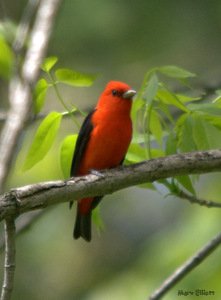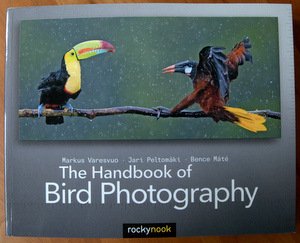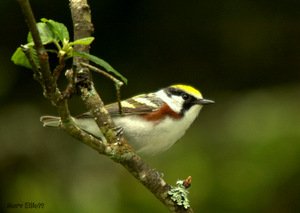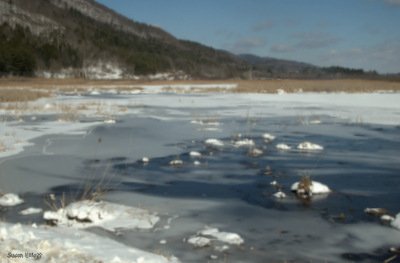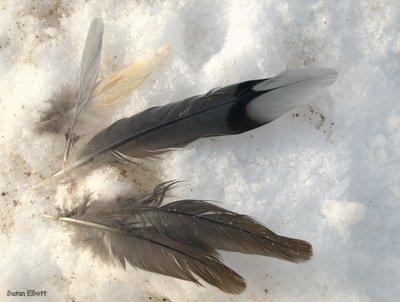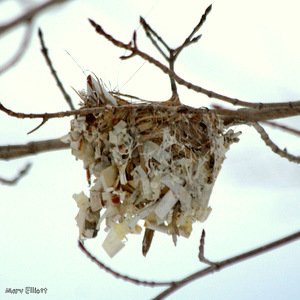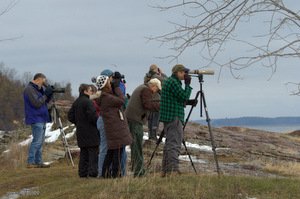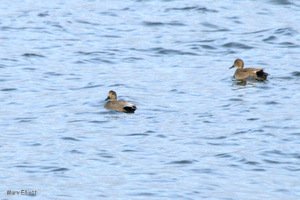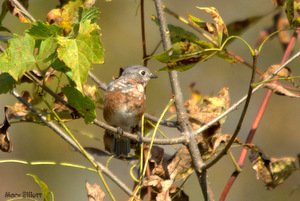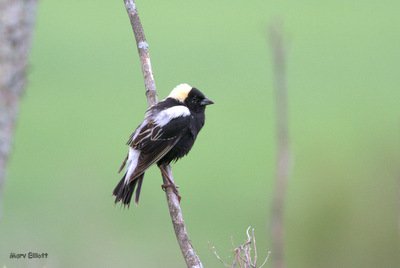 BobolinkFew of us thought we would reach more than 75 species for Century Count XVIII. With perhaps the worst possible Memorial Day weekend weather in several years – rain, wind, cold temperatures – the prospects were not good. Ten participants, however, rose to the challenge and tallied 102 species in a day-long marathon through Rutland County.
BobolinkFew of us thought we would reach more than 75 species for Century Count XVIII. With perhaps the worst possible Memorial Day weekend weather in several years – rain, wind, cold temperatures – the prospects were not good. Ten participants, however, rose to the challenge and tallied 102 species in a day-long marathon through Rutland County.
Many of the expected species at West Rutland Marsh were found, such as Virginia Rail, Marsh Wren and both Alder and Willow flycatchers, but a good number of the usuals were missed at this location.
In deteriorating weather, the group trudged up the Pleasant Street power line and was pleasantly surprised. Although the Blue-winged Warblers may have been singing ‘bee-brrr’ instead of ‘bee-buzz’ four of them were found. Indigo Buntings, Prairie Warblers, Eastern Towhees and Field Sparrows were singing away.
The Route 4 rest area, although hosting an unpleasant number of ticks, provided several warbler species including Blackburnian, Magnolia and Canada. There was no sign of a Cerulean Warbler as in past years, but that area was inaccessible due to a swollen stream caused by a blocked culvert.
At the north end of Lake Bomoseen an American Coot was a nice find in the heavy vegetation along with a few Wood Ducks including young.
A welcome rest for a picnic lunch at Bomoseen State Park provided the opportunity to find a Yellow-throated Vireo and a Blue-gray Gnatcatcher plus a Baltimore Oriole sitting on a nest.
A Bald Eagle was seen from the Kehoe Fishing Access upper lot on Lake Bomoseen along with four Common Loons (two more loons were also seen on Lake Hortonia and six on Chittenden Reservoir, no doubt related to the bad weather).
A Northern Harrier, a Savannah Sparrow and a handful of bubbling Bobolinks were found during a brief stop at Fair Haven Municipal Airport. A good number of Bobolinks were found in Benson as well as a Meadowlark and an American Kestrel.
The highlight of the day was a stop along Route 73 in Brandon along the Otter Creek. A Pied-billed Grebe, two American Bittern, one Least Bittern and three Common Gallinule were observed. Click here to find out why this area is so special.
The day ended at Lefferts Pond as it traditionally does. A Wilson’s Snipe was seen calling atop a phone pole. The day closed out with the songs of a Purple Finch and a White-throated Sparrow.
All sightings have been contributed to eBird (25 checklists).
Despite the conditions, the group remained good humor all day. Everyone contributed to the effort of seeing, hearing and identifying 102 species. Special thanks once again go to Roy Pilcher for planning another successful Century Count.
The day's list:
|
Canada Goose Wood Duck American Black Duck Mallard Common Merganser Wild Turkey Common Loon Pied-billed Grebe American Bittern Least Bittern Great Blue Heron Turkey Vulture Northern Harrier Sharp-shinned Hawk Bald Eagle Red-tailed Hawk Virginia Rail Common Gallinule American Coot Killdeer Spotted Sandpiper Wilson's Snipe Ring-billed Gull Rock Pigeon Mourning Dove Black-billed Cuckoo Chimney Swift Ruby-throated Hummingbird Belted Kingfisher Red-bellied Woodpecker Yellow-bellied Sapsucker Hairy Woodpecker Northern Flicker Pileated Woodpecker |
American Kestrel Eastern Wood-Pewee Alder Flycatcher Willow Flycatcher Least Flycatcher Eastern Phoebe Great Crested Flycatcher Eastern Kingbird Yellow-throated Vireo Warbling Vireo Red-eyed Vireo Blue Jay American Crow Common Raven Tree Swallow Bank Swallow Barn Swallow Black-capped Chickadee Tufted Titmouse Brown Creeper House Wren Winter Wren Marsh Wren Blue-gray Gnatcatcher Eastern Bluebird Veery Hermit Thrush American Robin Gray Catbird Brown Thrasher European Starling Cedar Waxwing Ovenbird Northern Waterthrush |
Blue-winged Warbler Black-and-white Warbler Common Yellowthroat American Redstart Magnolia Warbler Blackburnian Warbler Yellow Warbler Chestnut-sided Warbler Black-throated Blue Warbler Yellow-rumped Warbler Prairie Warbler Black-throated Green Warbler Canada Warbler Eastern Towhee Chipping Sparrow Field Sparrow Savannah Sparrow Song Sparrow Swamp Sparrow White-throated Sparrow Scarlet Tanager Northern Cardinal Rose-breasted Grosbeak Indigo Bunting Bobolink Red-winged Blackbird Eastern Meadowlark Common Grackle Brown-headed Cowbird Baltimore Oriole Purple Finch House Finch American Goldfinch House Sparrow |

